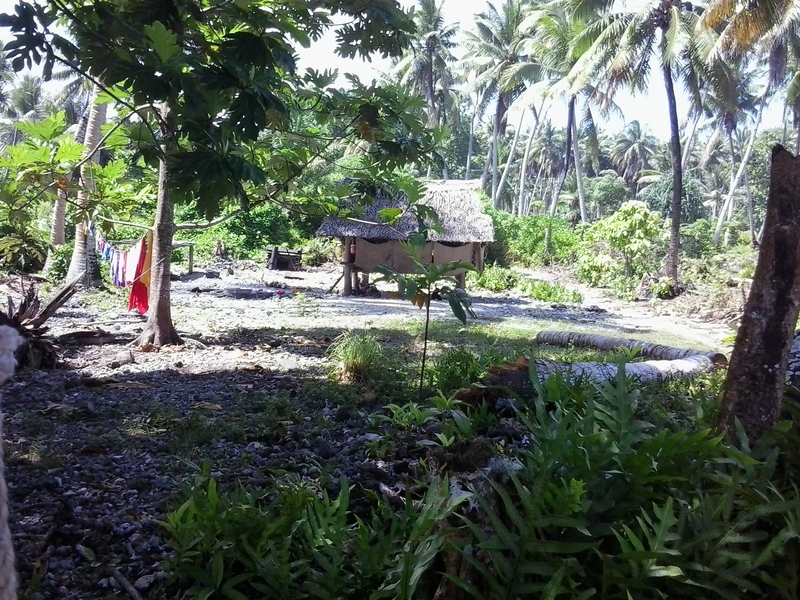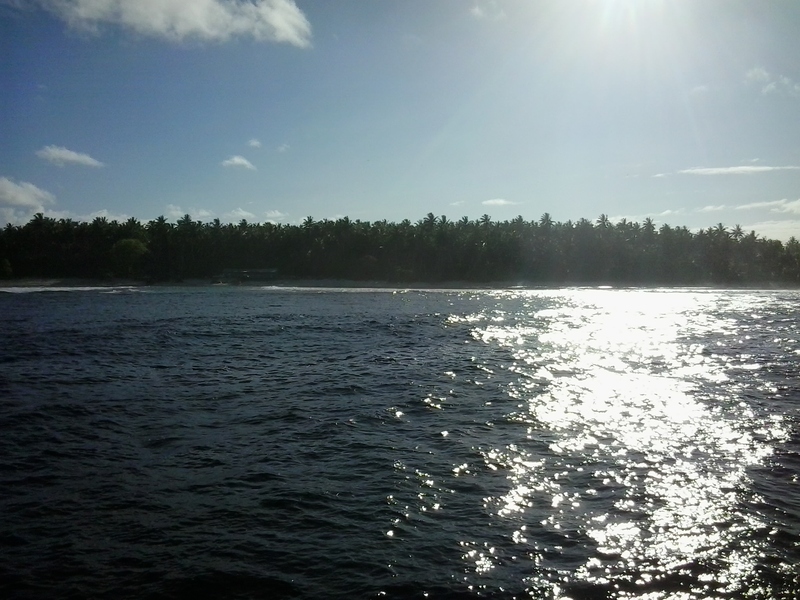
Teraina is also known as Washington island. The other two line islands I have visited, Fanning/Tabuaeran and Christmas, are described in the nautical chart as "scrub", but Teraina is described as "wooded". Teraina is a little farther North than the other two, and often finds itself in the Intertropical Convergence Zone, ITCZ, an area of low pressure around the equator. This means it rains more on Teraina than on the other two, and there are a lot of trees here.

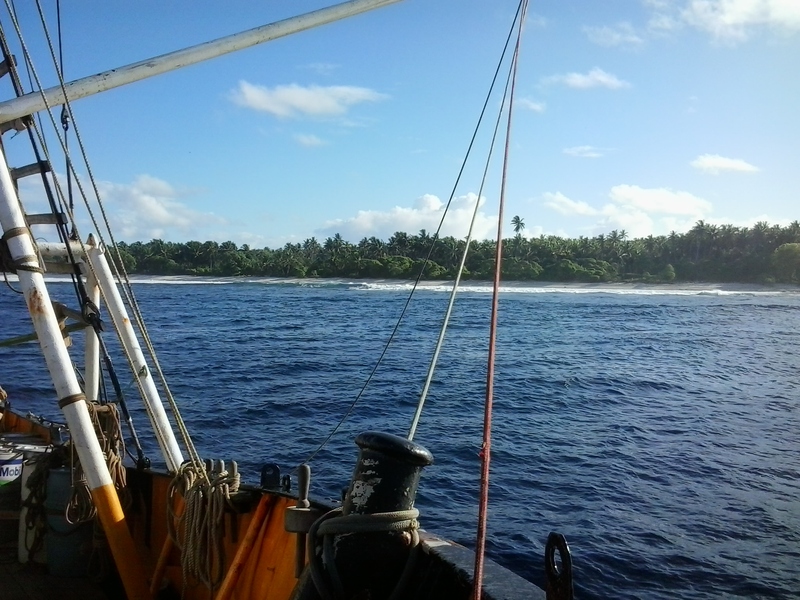

The islands's population is relatively small, and there is no sheltered lagoon for the Kwai to moor in. There is a break (channel) in the reef that is suitable for small boats, but the Kwai has to anchor outside.
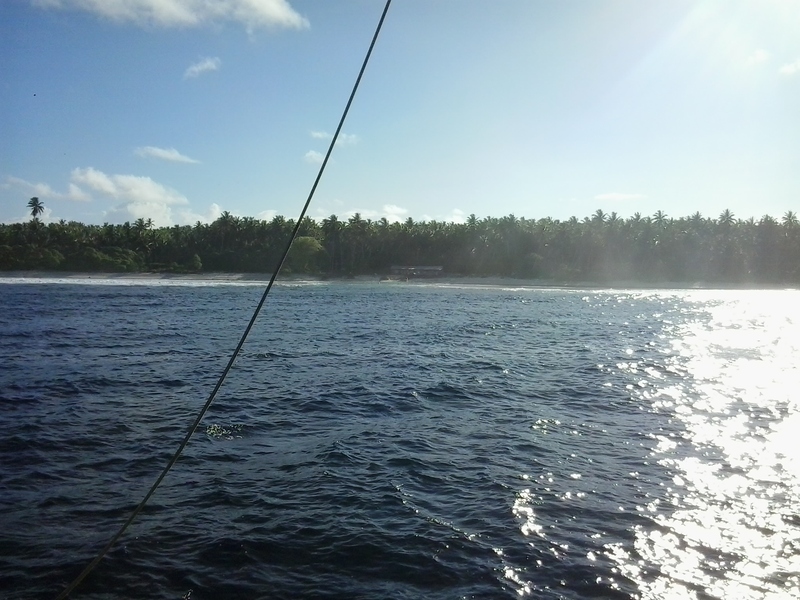
Taking even a small boat ashore through the breakers requires timing and skill, because when the waves are big enough (which is often), the waves break in the channel as well as on the sides.
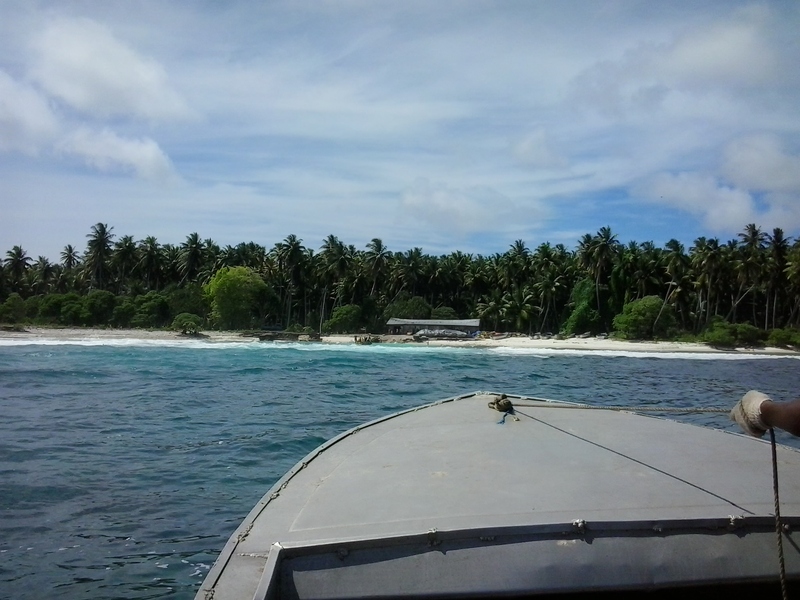
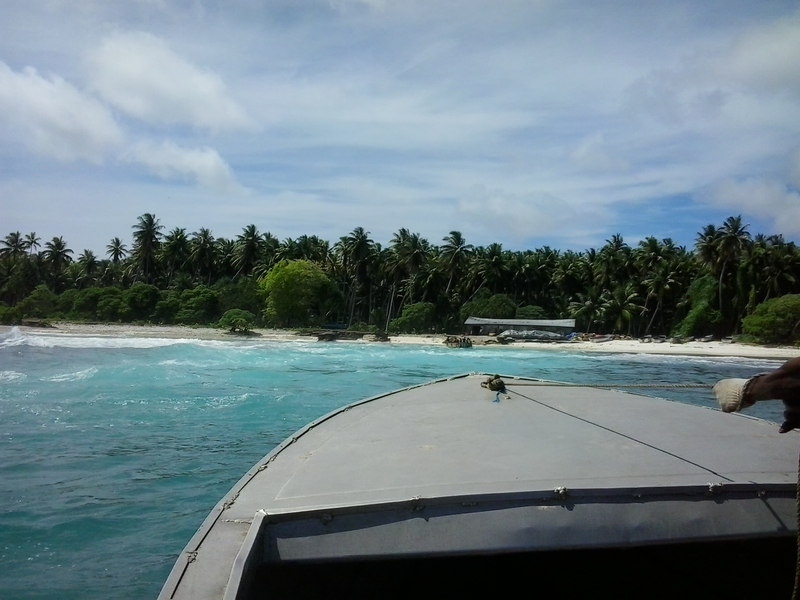
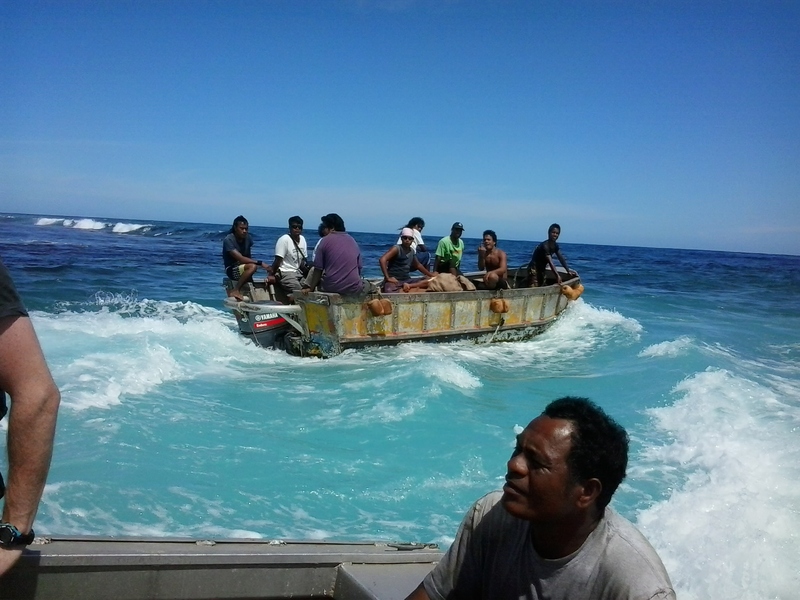
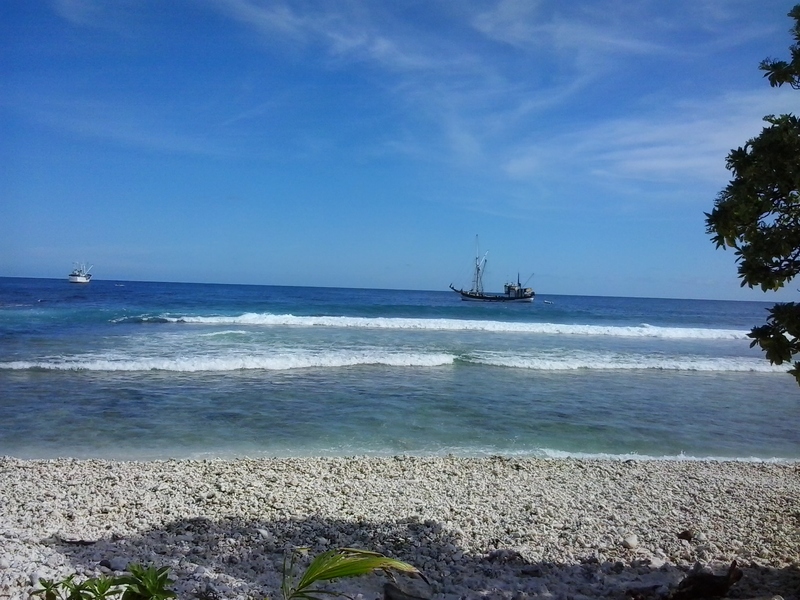
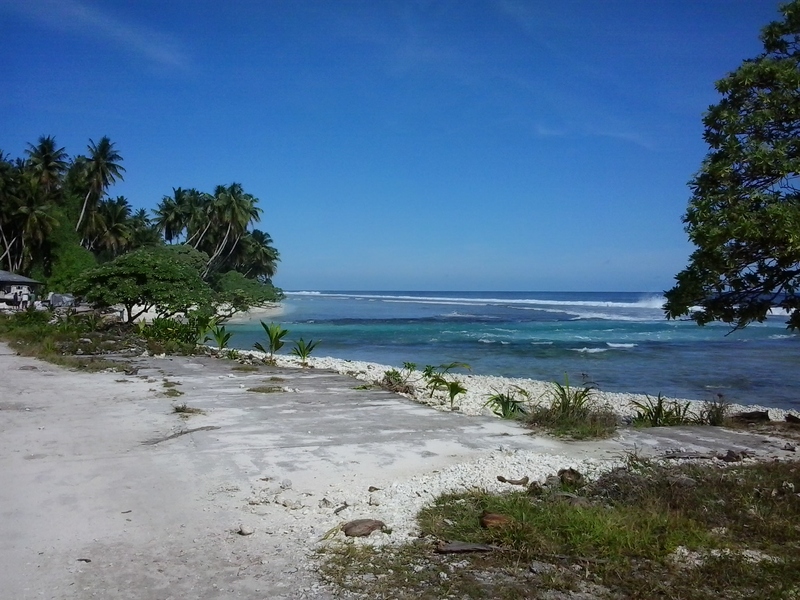
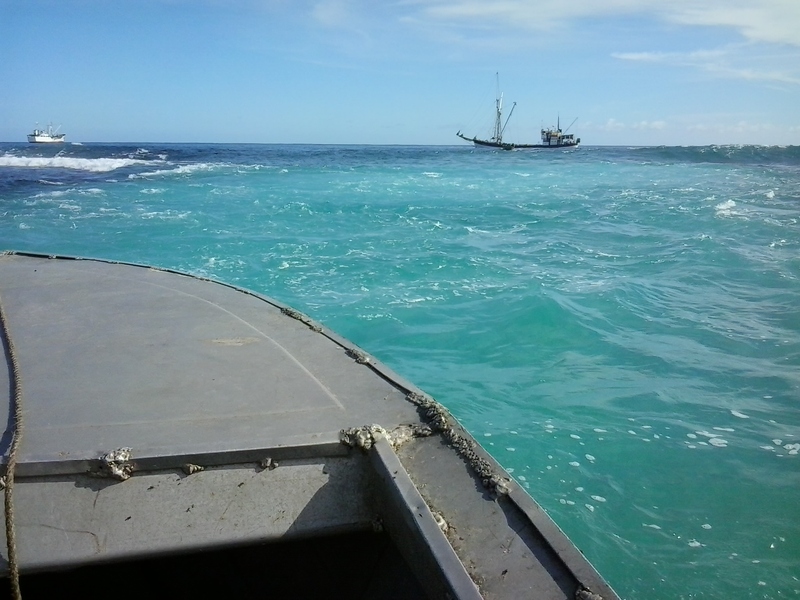

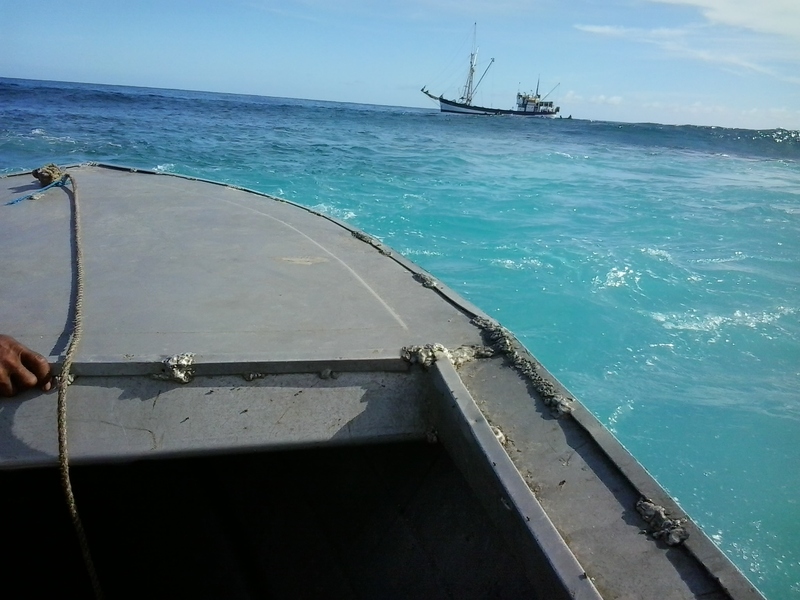
At this time, everyone and everything that comes to or leaves Teraina must go through this channel on a small boat.
One of the passengers on the Kwai is a Captain John from Fiji. He is traveling here as part of an intergovernmental commission that is trying to improve transportation around these islands. He says they may find funds to reopen the airstrips on Fanning and Teraina, and provide some kind of air service. Until something like that happens, everything that comes to Teraina must go through this treacherous channel.
Perhaps because of its abundant rain, Teraina has the largest freshwater lake of any atoll in the world. However, the lake is hard to reach -- I was not able to find any road leading to it. Instead, it can be reached along these canals. I did not do it, but I talked with people who had taken a boat to the lake.
These canals make Teraina look very tropical...



On the afternoon of my first day here, thanks to a kind-hearted person on the Kwai who lent me a bicycle (yes, the bycicle had to go through the breakers on a small boat), I took a tour all the way around the island, which is only about 5 miles long by 1-2 miles wide. It took me from about 1:30 to 5:30pm to do the round.
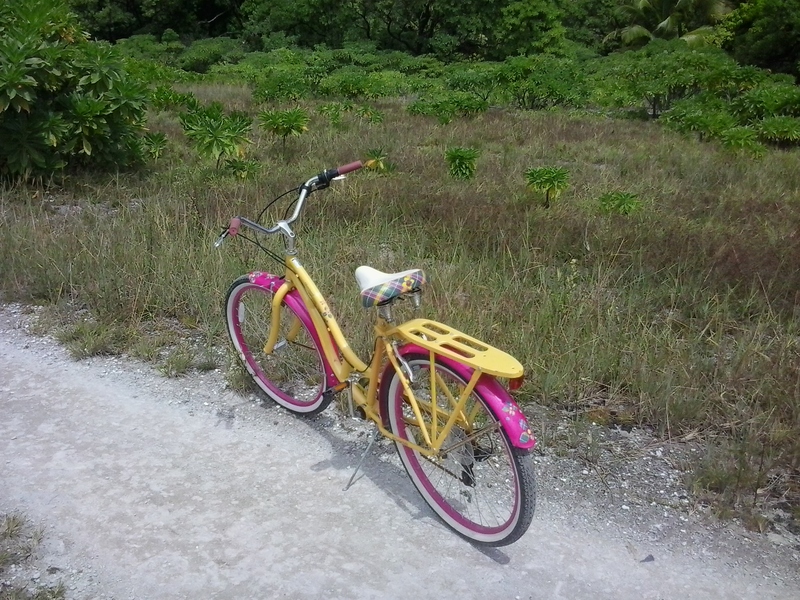
These pictures are from the village near the boat landing. The third picture shows a happy pig as well as a fellow bicyclist.
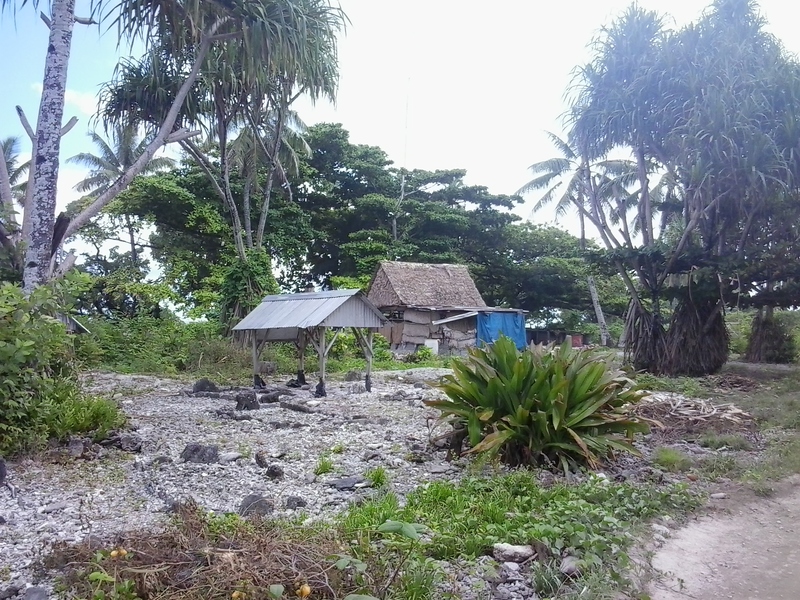

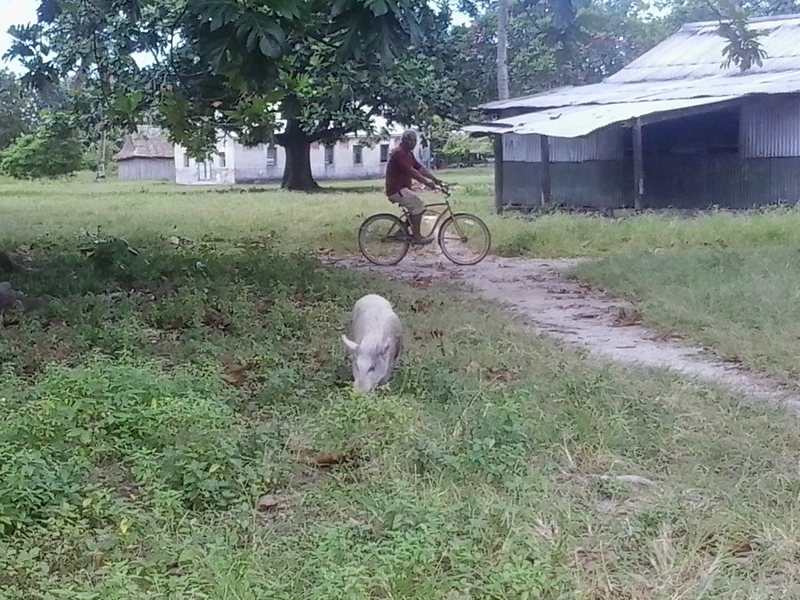
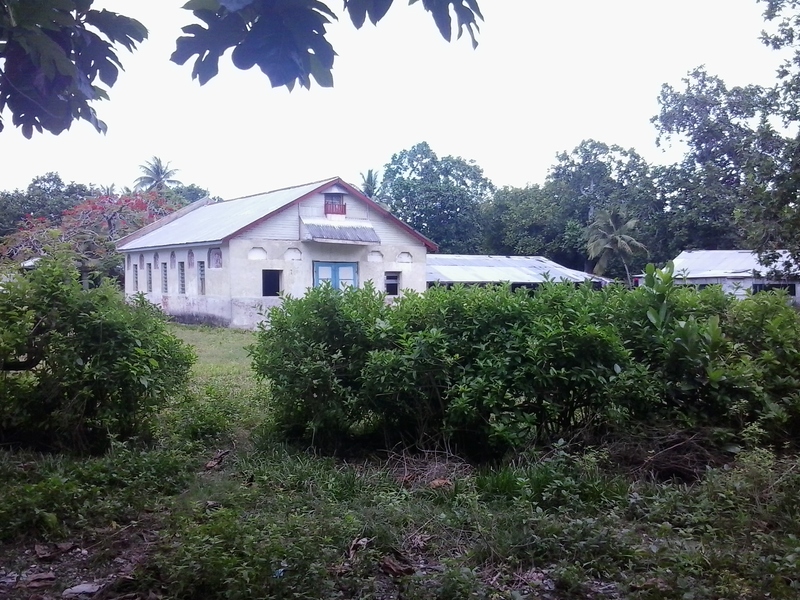
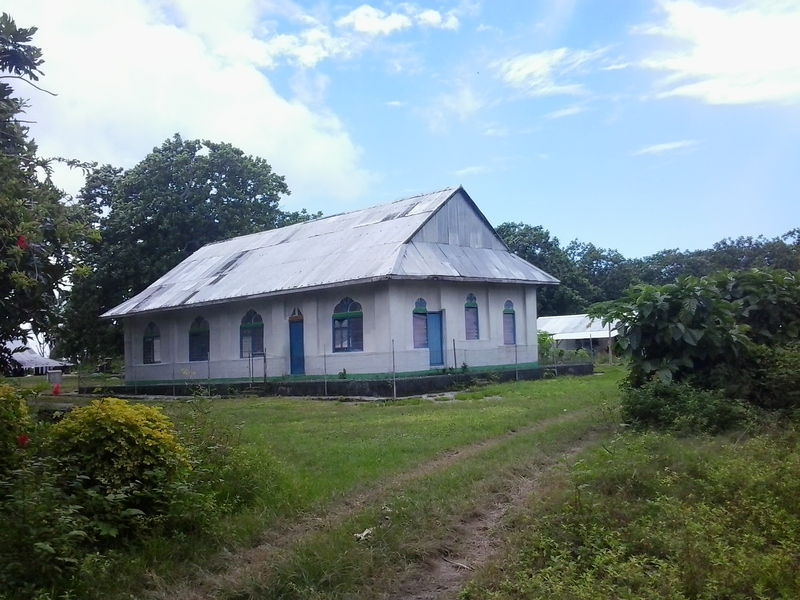
Continuing around the island, I found some beautiful beaches and some very friendly people. I made sure I always asked them before I took a picture, and they seemed happy to have me take their picture.
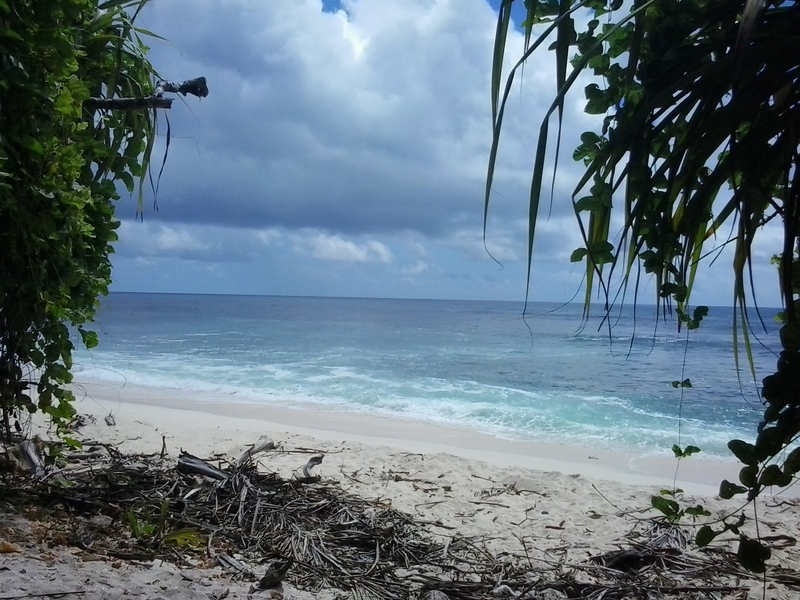
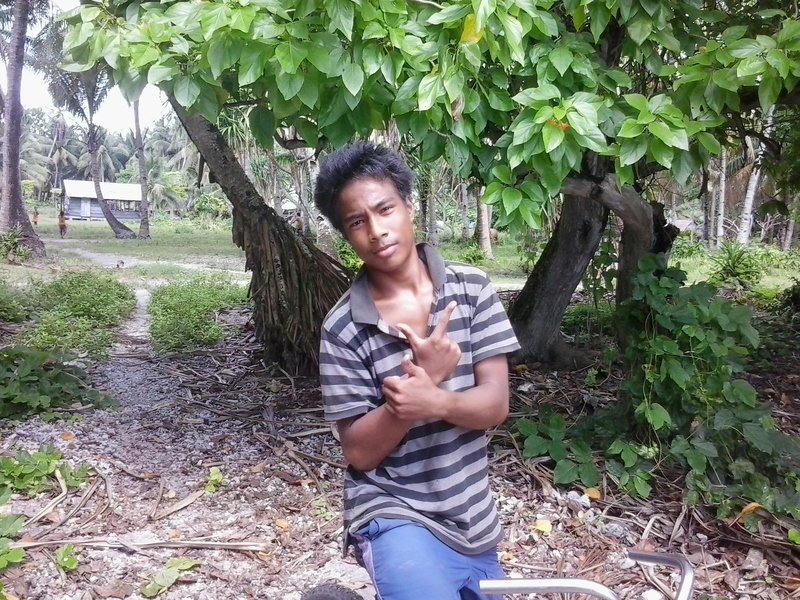
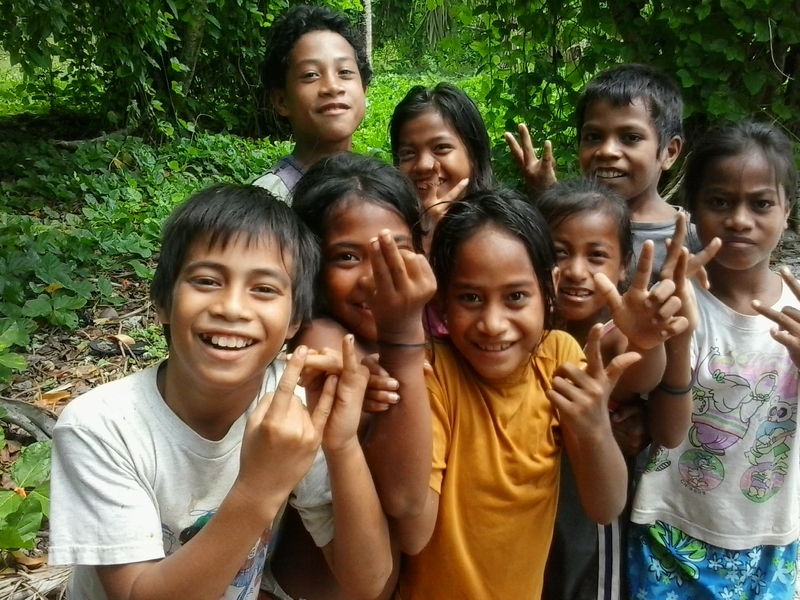
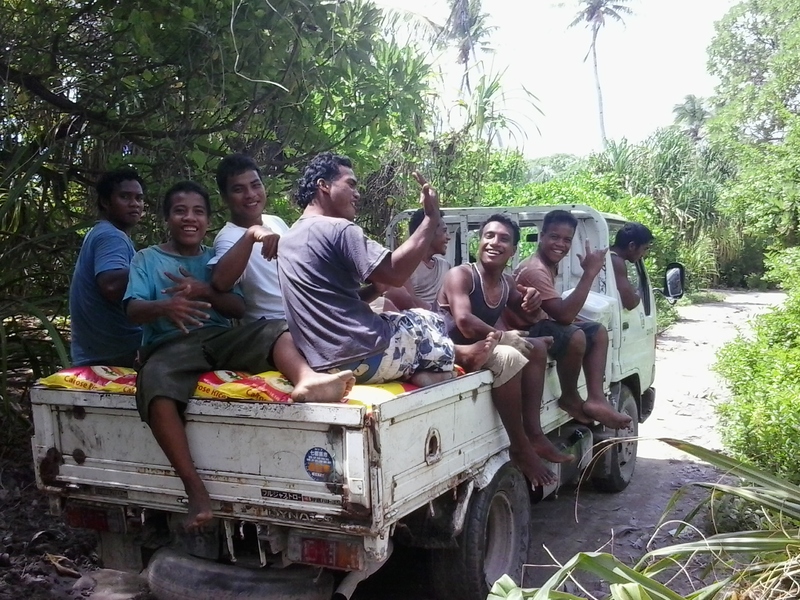
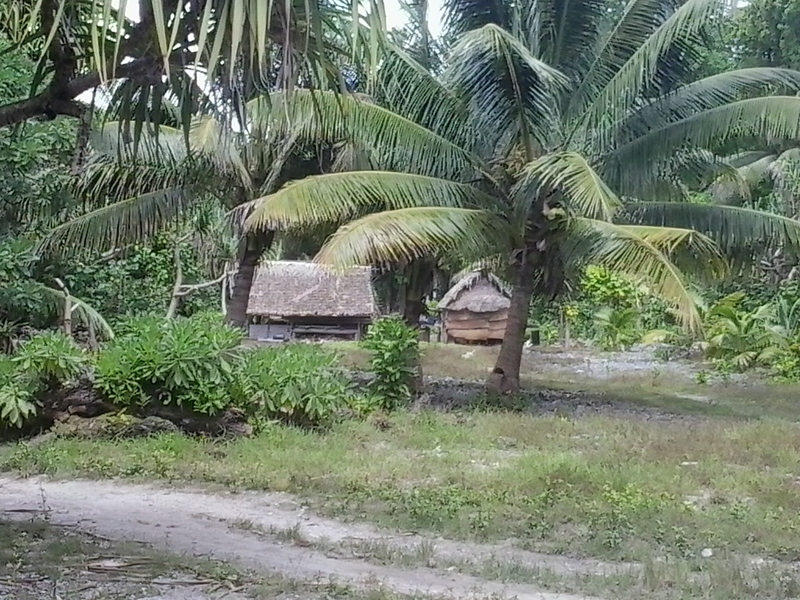
I found a young coconut tree growing by the side of the road.

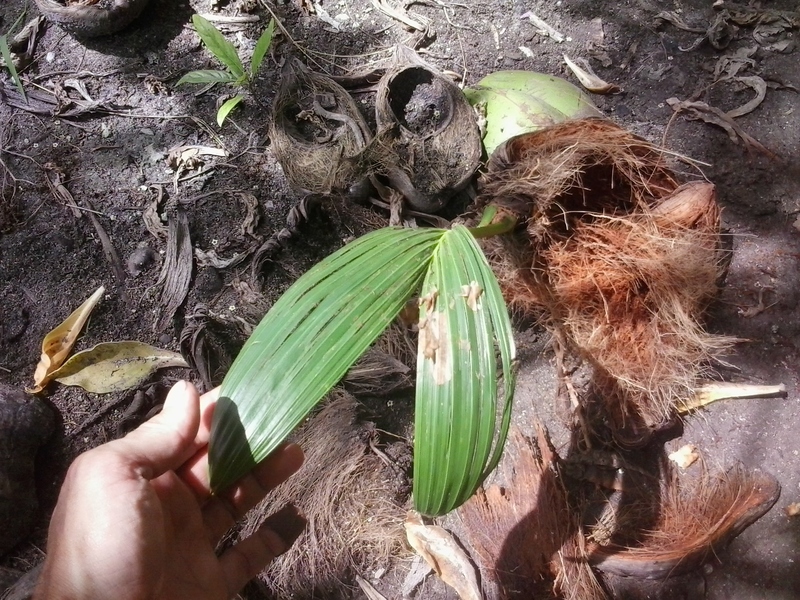
The Northwest side of the island has fewer people and more open spaces.
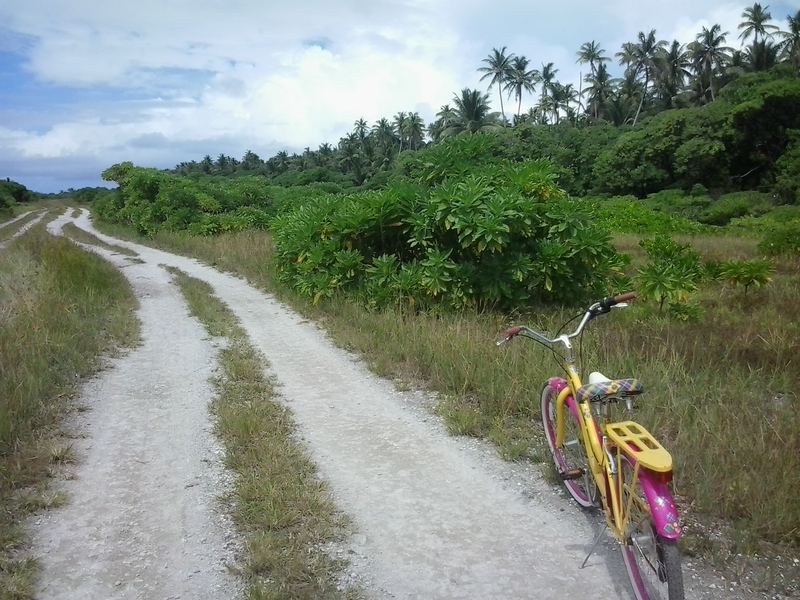
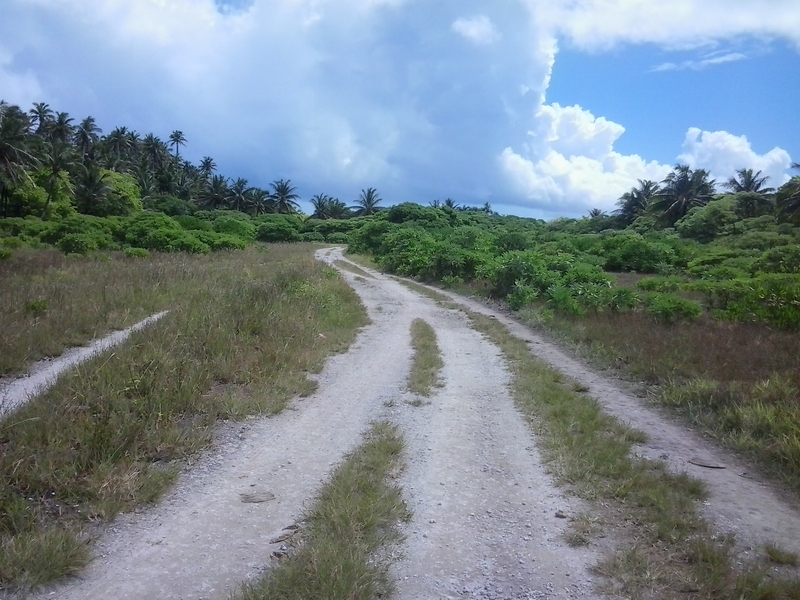
KPC is the Kiribati Protestant Church. As well as protestants, in Kiribati I have seen Catholics and Mormons.
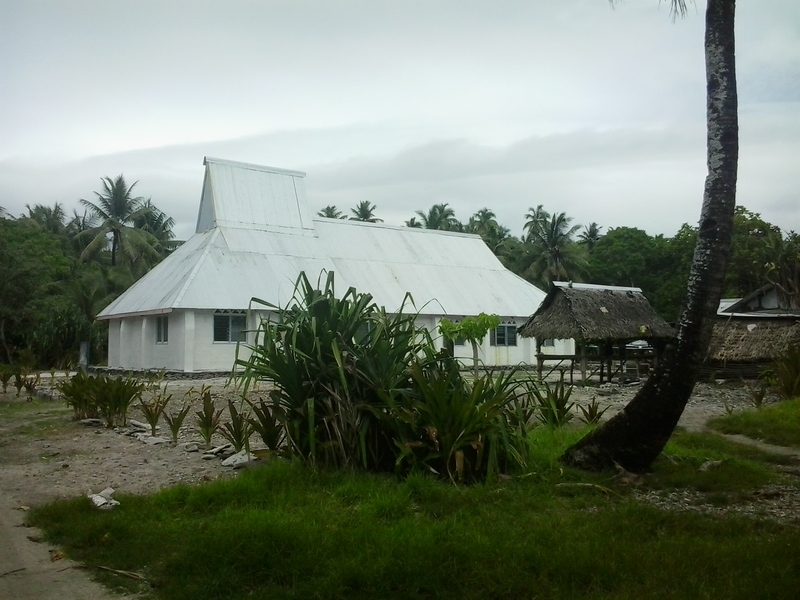
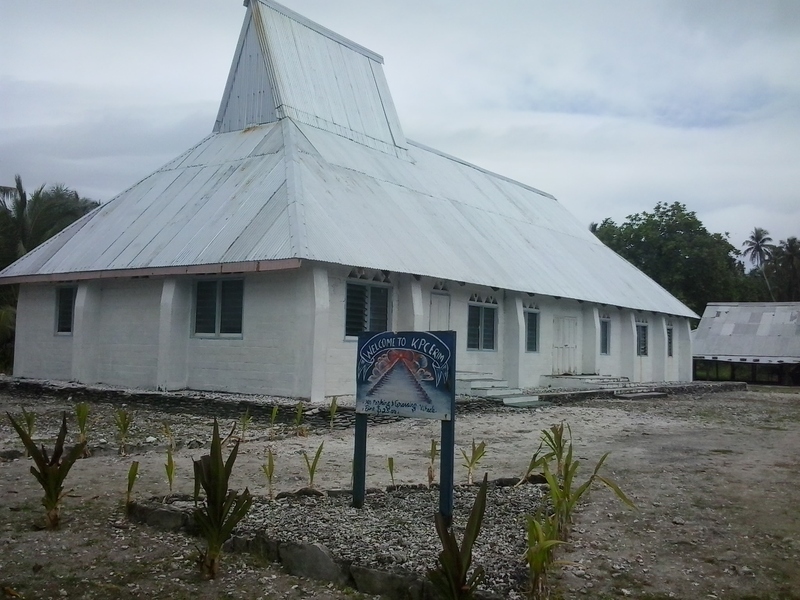
Heading East, the woods became thicker and the people fewer (and my camera lens seems to have gotten dirty!)
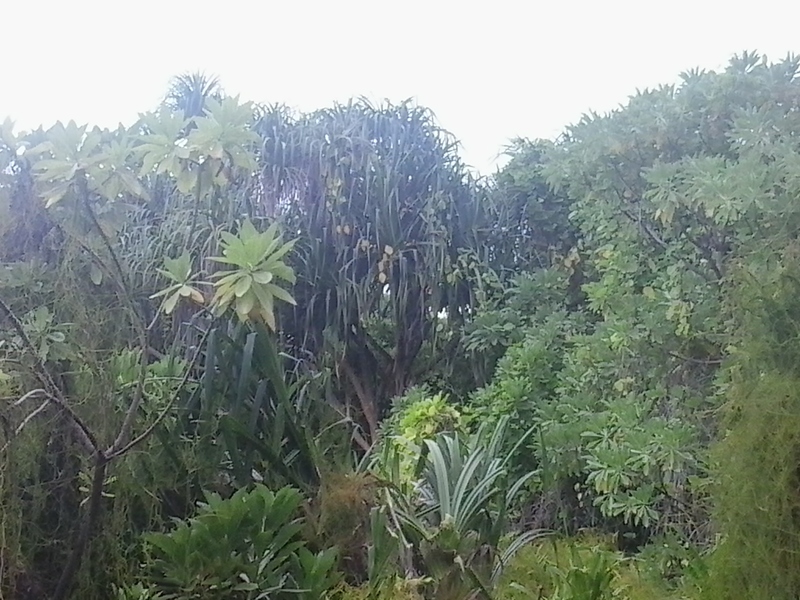
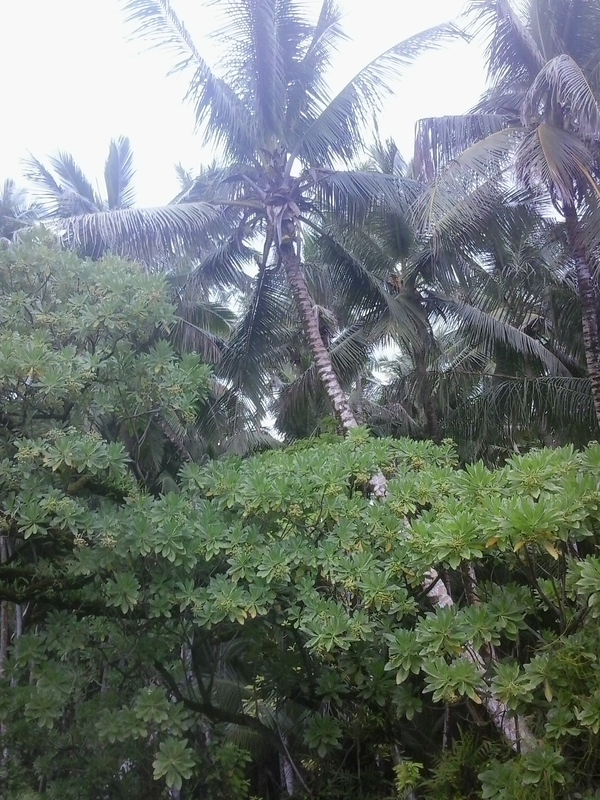
I saw some nice birds, including these Sooty Terns.
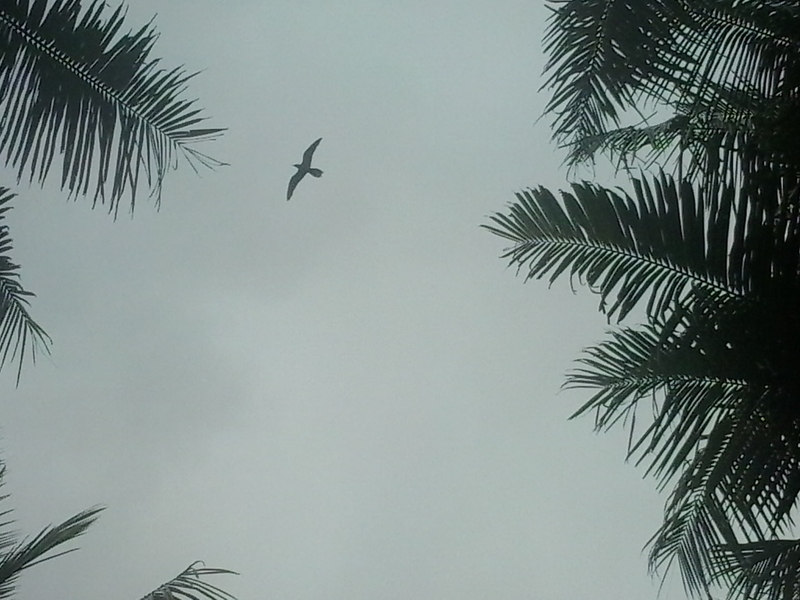
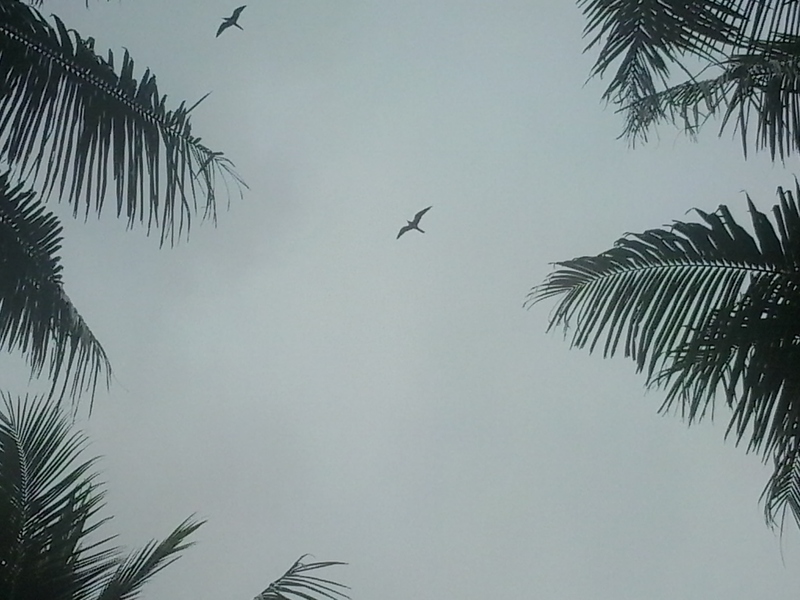
I found a nice place for a swim.
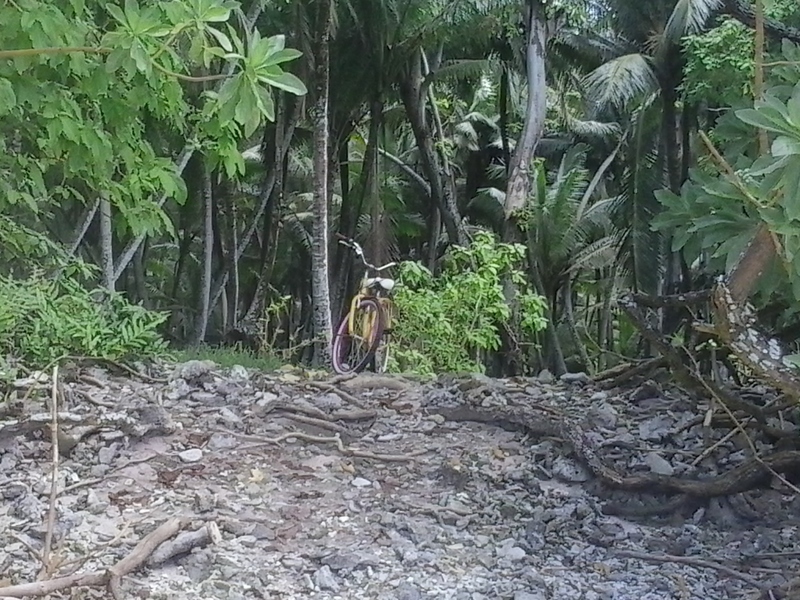
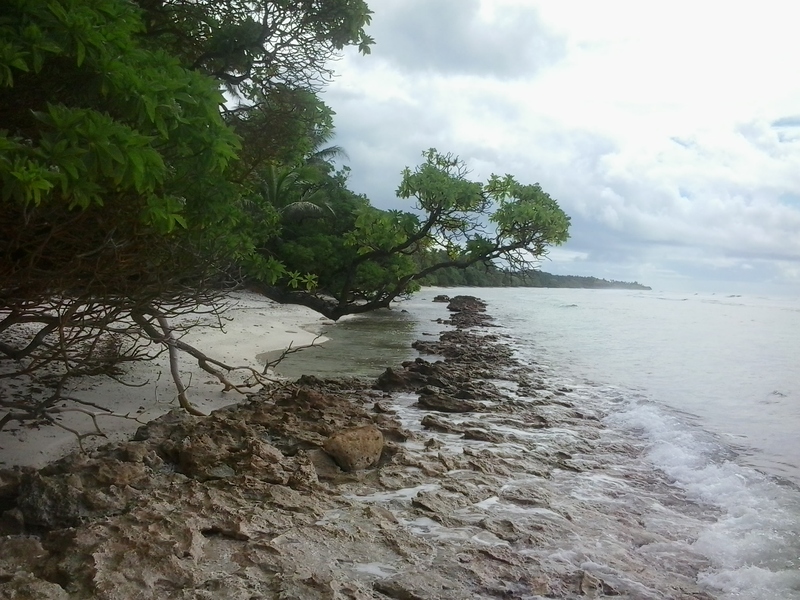

I also found some interesting tall trees, forming beautiful open groves. Somebody guessed for me that they might belong to the genus Pisonia.
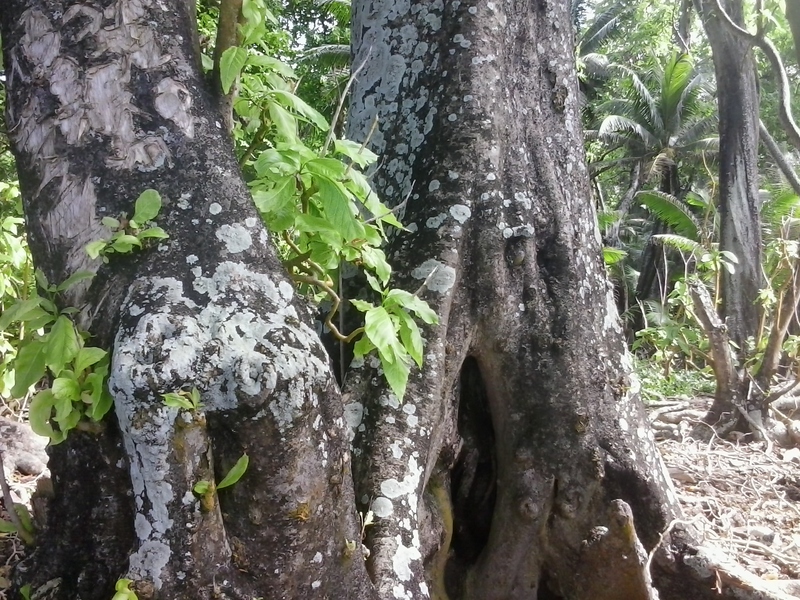
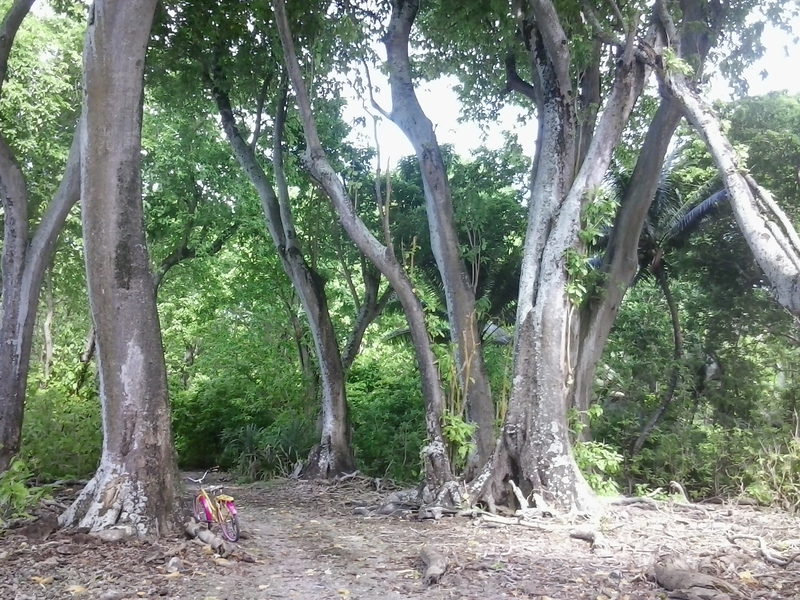
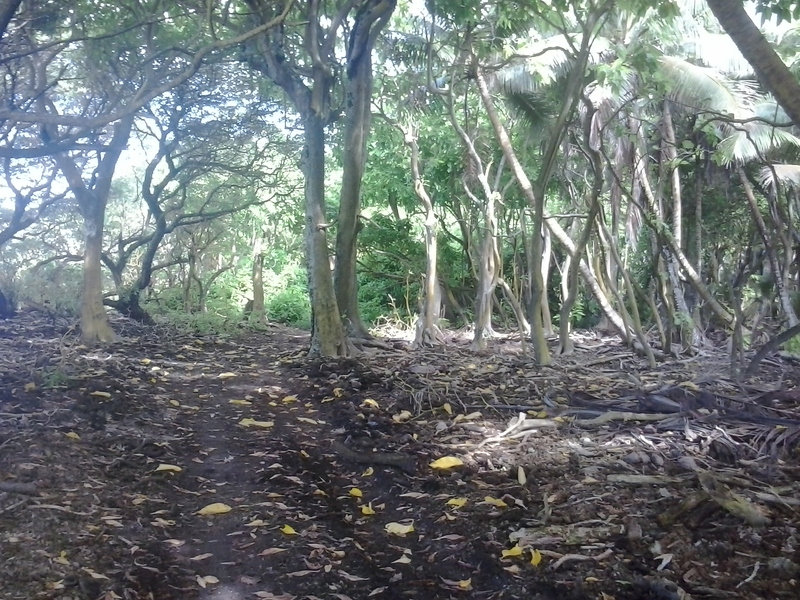
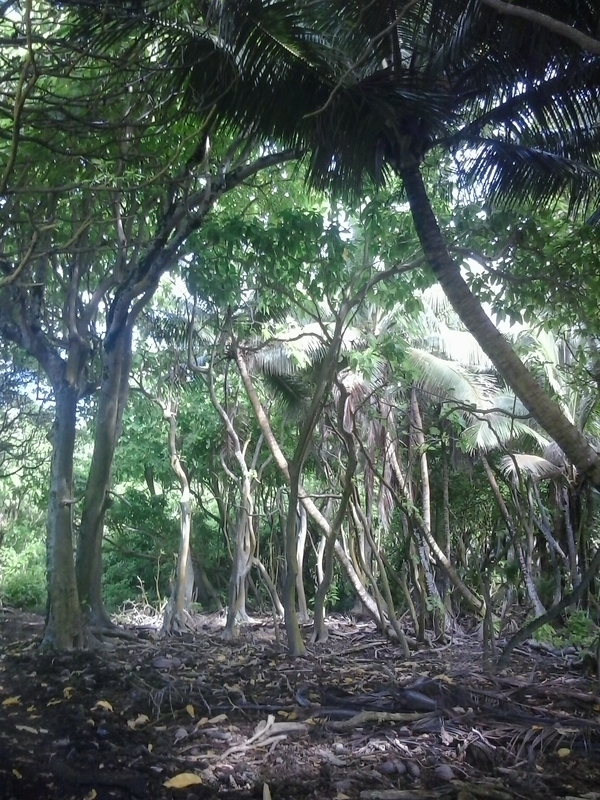
In these groves I found quite a few coconut crabs (also common among the coconut trees), and hermit crabs that also live on land.
In search of the lake, I took one road leading inland through a thick forest of coconut trees.

In this coconut forest, I was visited by some curious sooty terns, that flew around my head. I tried to take a video, but I only got the last part of their inspection. For a while, one of them flew close to my face, looking directly at me.
Having failed to find the lake, I returned to the main road that goes around the island.
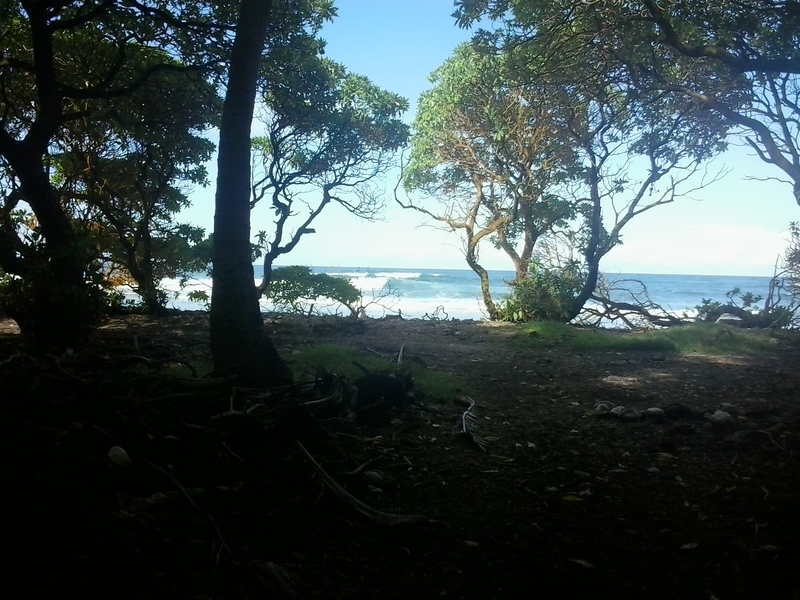
I eventually found a small lake or lagoon that might have been fresh water. The water had some dead fish in it, so I did not taste it to check.
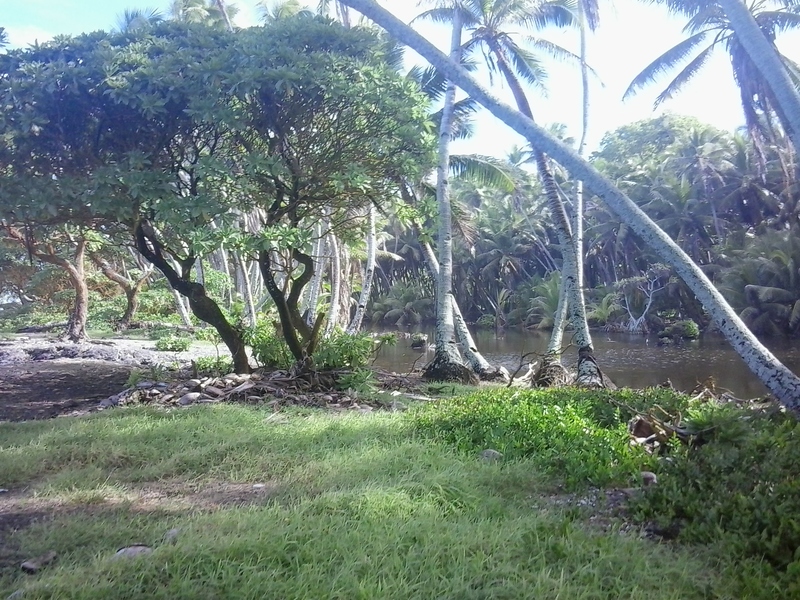
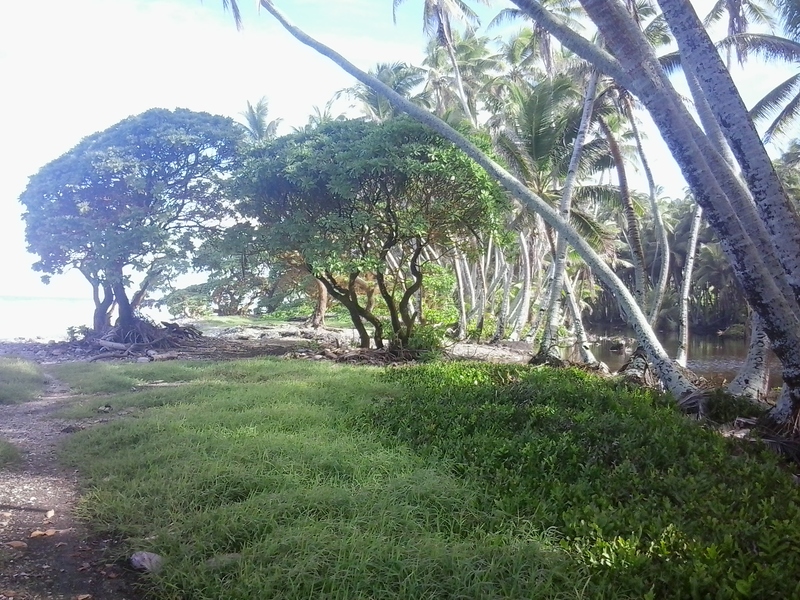
This was the most remote part of the island -- I saw nobody for about half the trip. The rest of the tour went by many more coconut forests mixed with native plants.

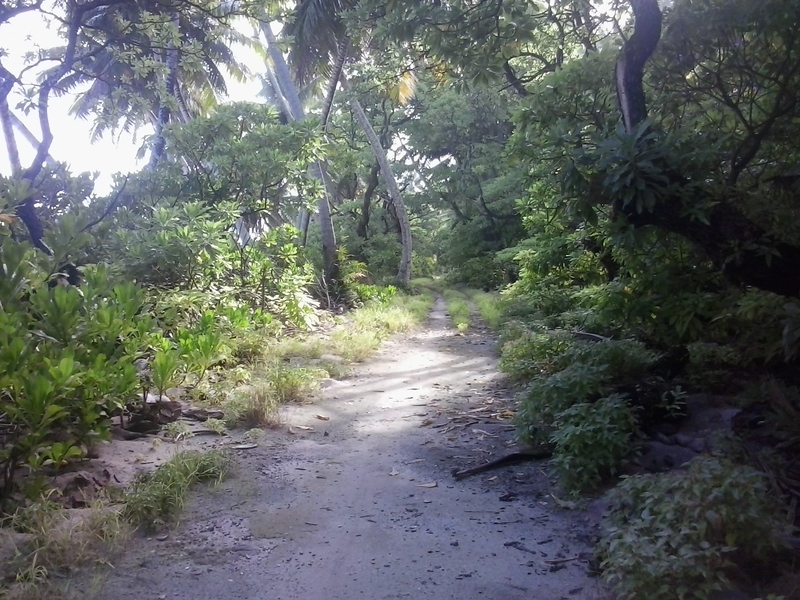

Eventually I started to see houses again.

People occasionally asked me questions, and I would tell them I was on the Kwai. They would then almost always ask me how long the Kwai was staying, and when it was leaving. Obviously the Kwai is an important lifeline for this island.
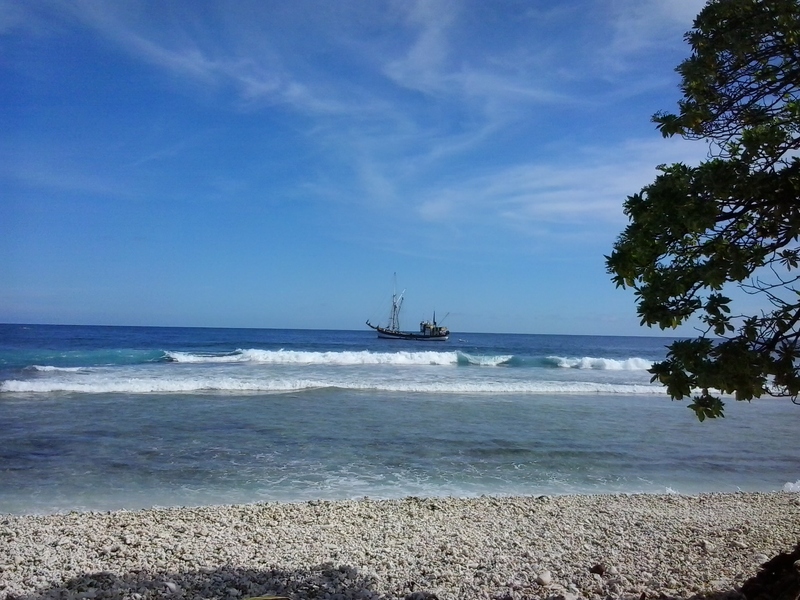
On the second morning, we were visited by a pod of what looked like dolphins, and were probably pilot whales.
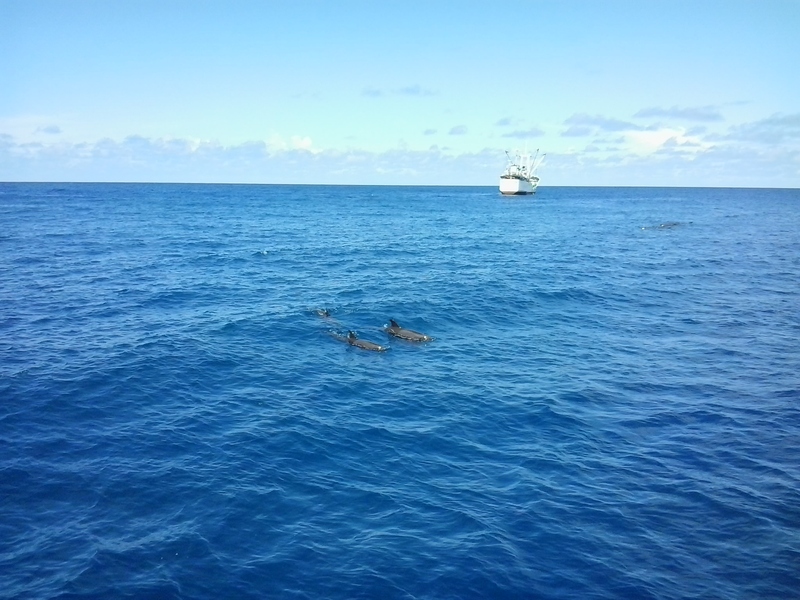

They did not jump or do anything unusual, but there was a large group, farther from the ship, that was very compact. I am guessing something special was happening, such as perhaps a birth.
I made it ashore on the second day as well, and was able to briefly use the Internet. But in spite of such modern conveniences, a lot of life for the people of Teraina is probably fairly simple.
